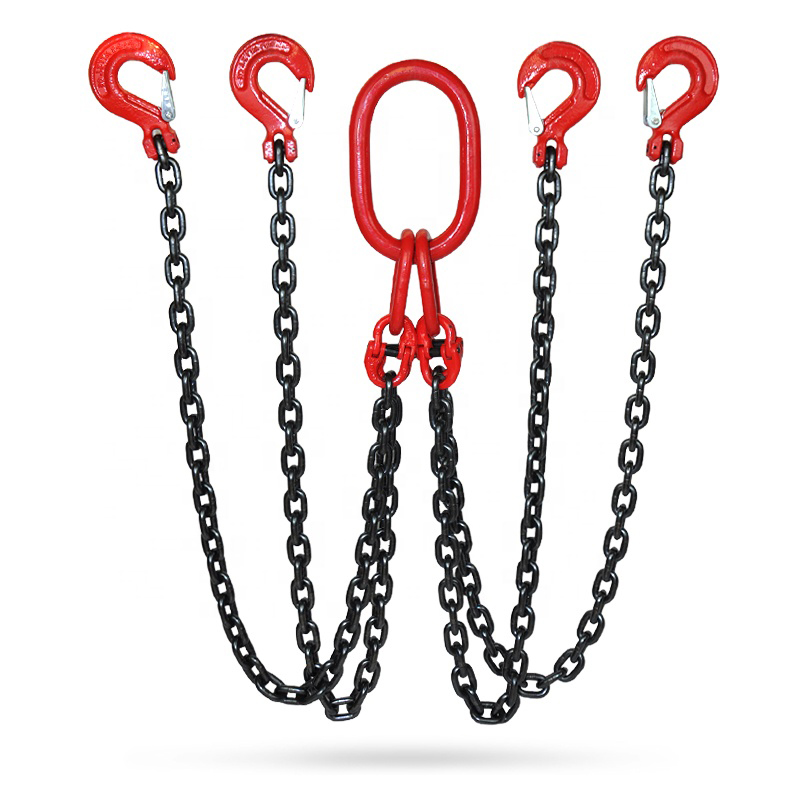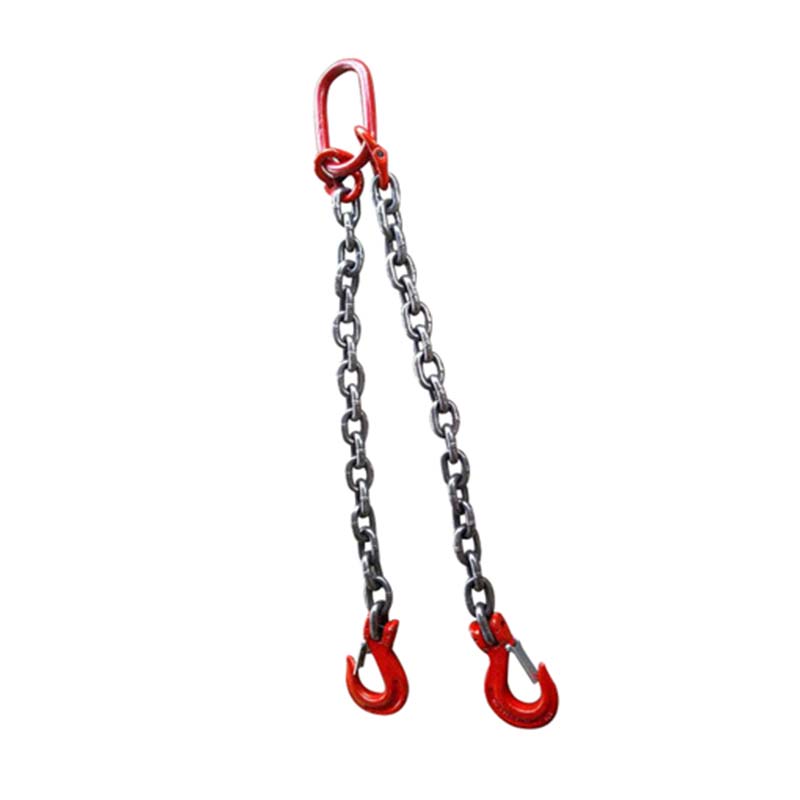Our staff will contact you within 12 hours, You can also contact us through the following ways:
Contact US WhatsApp: +8618766656705
- Email: [email protected]
- Tel: +8618766656705
- Web: https://www.toponechain.com/
Angles change, pick points disagree, and loads rarely hang level, so riggers reach for a chain sling with grab hook when they need fast, precise length control without a full re-rig. This guide explains how grab hooks actually hold a link, how cradle and standard pockets differ, where shorteners belong in the rig, and how to size every component from the sling tag rather than from paint. Follow the steps to trim legs cleanly, protect edges, and keep inspection records tight—so your lift runs smoothly from test bump to set-down.


A grab hook controls length, not just connection. The machined pocket accepts one full link and fixes that link at a known position. You then shorten or lengthen the leg in half-link steps (via opposite leg adjustments) until the load sits level. You never trap a partial link and you never side-load the hook; both mistakes crush crowns and cut capacity.
Key habits that keep control:
Seat one whole link in the pocket with the load path centered.
Keep the chain straight into the hook; avoid twist and out-of-plane angles.
Read the hook WLL and match it to the highest leg tension in your plan.
Verify the grade on the link (e.g., “8” for Grade 80 or “10” for Grade 100) and keep the lowest WLL as the system limit.
Manufacturers cut pockets differently. You match the style to the job and then size it from the tag.
Standard grab hook grips a link on two faces and suits general shortening. You watch crown wear closely and keep angles generous.
Cradle grab hook seats the link deeper and spreads contact, so the link sits flatter and resists point loading. Many brands allow friendlier ratings in shortening with cradles—check your sling tag and data sheet before you assume anything.
Shortening clutch / shortener mounts at the head (often on an adjustable sub-assembly). You trim legs up high, which keeps the load end tidy and prevents extra hardware near the pick point.
You choose pocket position for control and housekeeping:
At the head (preferred for multi-leg slings): you mount shorteners next to the master link. Crews trim opposite legs in seconds, latches stay clear of the load, and the layout reads clean at a glance.
At the load end (single-leg or special fixtures): you grab a link close to the hook when you need micro-adjustments near the pick point. Keep clear sight lines and confirm that the hook and eye align to the line of pull.
Angle multiplies leg tension faster than any other variable. Set geometry with numbers, not hunches.
Two-leg quick check
Tension per leg = Load ÷ (2 × sin θ), where θ equals the angle from vertical of one leg.
Trim with the grab hook until you hit the plan angle. For three- or four-leg rigs, plan conservatively as if three legs carry while the fourth stabilizes, then size chain diameter and hook WLL from the sling tag’s angle table. Lift 150 mm, pause, re-check angle and balance, and only then travel.
Hook Type | Primary Role | Where It Shines | Sizing & Setup Notes |
Standard grab | General shortening | Shops and yards with clean geometry | Seat one full link; center the pull; confirm hook WLL ≥ leg tension |
Cradle grab | Reduced link point loading | Frequent trims, tighter angles | Check your tag: many brands allow better ratings in shortening |
Shortening clutch (head-mounted) | Fast, tidy length control | Multi-leg slings; frequent resets | Mount at the master link; trim opposite legs evenly |
Grab with latch keeper | Added retention during handling | Windy decks, long travel | Latch never replaces seating; still capture a full link |
Always match hook grade and size to the chain; let the lowest WLL in the path govern.
Treat the chain sling with grab hook as a single system. Start at the master link, keep inside width generous so the crane latch closes freely, and read the sub-assembly rating for the number of legs and chain size. Choose self-locking hooks at the load for long travel, wind, or pauses; keep spring-latch sling hooks for short, protected moves. When legs may sweep, connect bow shackles at the head; run the pin through the hardware and face the bow toward the legs so the pin carries pure shear.
1. Lay out the sling and roll links until grade stamps face up; clear twists.
2. Inspect grab hooks and pockets; remove burrs and replace peened or cracked castings.
3. Check hook WLL and maker ID; confirm grade and size match the leg.
4. Seat the master link in the crane hook; close the latch and confirm free swing.
5. Engage load hooks or shackles; align eyes to the line of pull.
6. Snug the rig and measure the angle with a card or an inclinometer.
7. Trim legs with grab hooks or head shorteners; adjust opposite legs in small steps.
8. Lift 150 mm; pause; re-check angle, latch security, and clearances.
9. Travel slowly; guard corners; land straight; release tension; unhook in reverse.
Grab hooks control length; guards protect steel. Fit edge protection wherever chain meets a sharp radius, door frame, or plate corner. Use wear sleeves or softeners on painted surfaces. Remember: stainless resists corrosion, not cutting; alloy crowns still scar on hard edges. Guard first, then pick.
Keep checks short, measurable, and logged with photos:
Tag & traceability: grade, WLL by hitch and angle, serial/batch, maker ID—clean and legible.
Pocket condition: flat faces, no peening at lips, no sidewall cracks; verify pocket gauge if supplied.
Link seating check: capture one full link; confirm centered load path; no twist entering the hook.
Hook throat opening: measure against the maker’s spec; retire hooks that exceed the limit.
Latch or keeper (if fitted): cycle ten times; confirm full closure without rub.
Chain wear & elongation: gauge crown diameter; measure five consecutive links under light tension; retire legs beyond published limits.
Hardware alignment: verify bow-shackle pins and nut/cotter security where used.
Problem | Likely Cause | What You Do |
Link creeps out of pocket | Half-link capture or twist at entry | Reseat a full link; straighten the leg; remove twist |
One leg stays slack | Length mismatch or out-of-plane padeye | Trim the diagonal partner a step; re-bump and re-read angle |
Hook chatters in stops | Spring-latch hook on a moving job | Switch to self-locking hooks at the load |
Scars at sharp edges | No corner guards | Fit guards and reroute to the true line of pull |
Pin loosens in travel | Screw-pin shackle under vibration | Change to bolt-type shackle; tighten and fit cotter |
Choose material and finish for the site, then size from the tag. Black-oxide or phosphate Grade 80/100 reads well in shops and yards. Zinc–nickel coatings shed salt faster in coastal work; crews still rinse and oil pivots after splash. Stainless (304/316) supports washdown and hygiene programs; match stainless hooks and shackles where practical to reduce galvanic pairs. Regardless of finish, you keep stamps visible and documents ready.
Auditors ask for numbers, not stories. Photograph:
The grade stamp on a link and the WLL stamp on each grab hook.
The sling tag with WLL by hitch and angle plus serial/batch.
The angle card reading after the test bump.
Attach proof-test sheets to the job file and note any heat exposure, salt splash, or chemical washdown.
Plan the angle, capture a full link in the pocket, trim legs in measured steps, guard every corner, and log stamps plus tag data, and your chain sling with grab hook will deliver clean, predictable lifts every shift—contact TOPONE CHAIN today for certified chain slings with grab hooks, matched hardware, and complete documentation for your next job.